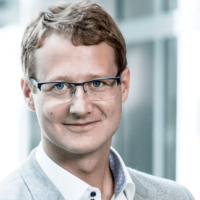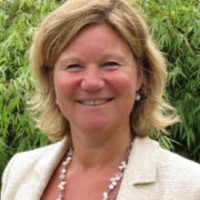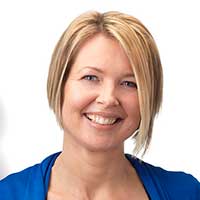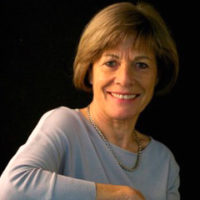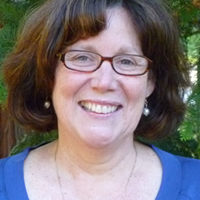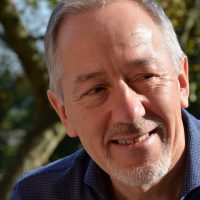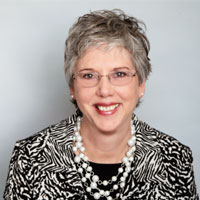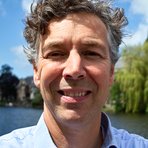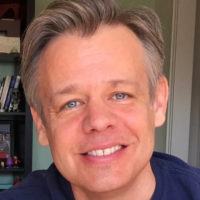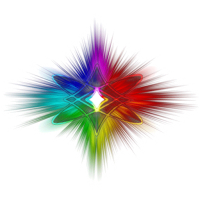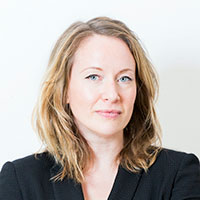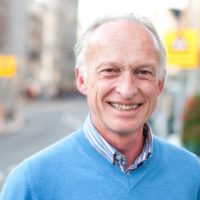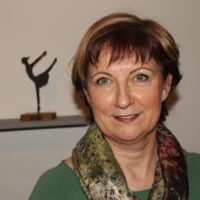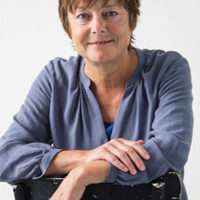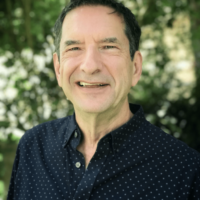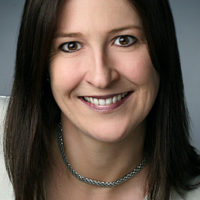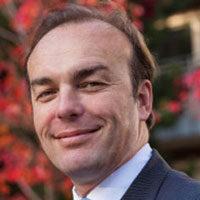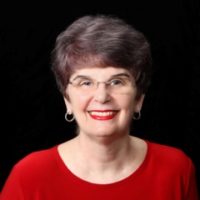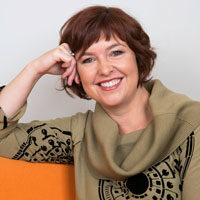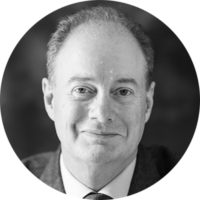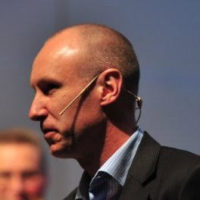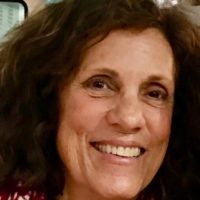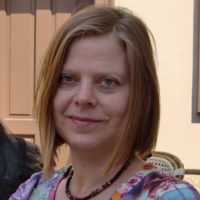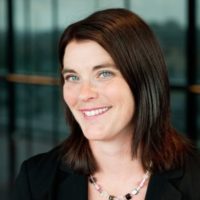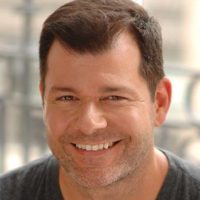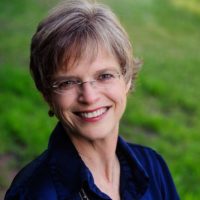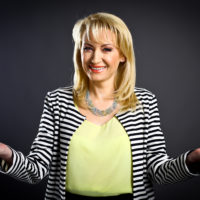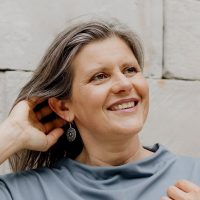The Persian Sufi poet Hafiz wrote, “The words you speak become the house you live in.” An old Dakota proverb says, “We will be known forever by the tracks we leave.” This summer I took time to reflect on my life journey and where I am now. I thought a lot about people I have looked up to and what it was about them that inspired or impressed me. Time and again, their presence stood out the most—who they were, how they showed up to life. Which led me back to Transformational Presence and the question: What makes someone’s presence transformational? The answer came in the form of Ten Core Capacities of Transformational Presence:
Awareness
Surrender
Purpose
Presence
Stillness
Compassion
Action
Love
Faith
Resilience
Before introducing the Ten Core Capacities, perhaps it is helpful to define “Transformational Presence.” In simple terms, it’s showing up to life and leadership in ways that call forth the best from ourselves and from others, as well as from the situations, organizations, and societies around us, in service of a greater good and the well-being of all.
I think of it as tending a garden. If you are a gardener, you know that when you plant seeds, there is nothing you can do to make those seeds grow. However, there are many things you can do to encourage those seeds to grow. You can plant them in rich soil and make sure they have the proper light and water. You can fertilize the ground. You can pull the weeds so that the young plants have space to grow and don’t have to compete for nourishment. In other words, you tend the garden.
Transformational Presence grows out of being conscious of how we tend the gardens of our personal and public lives. Our approach is based on Three Fundamental Questions:
- What wants to happen? Or, What is trying to shift? What is trying to get our attention?
- Who is that asking me to be? Or, How is it asking me to show up? What role is it asking me to play?
- What is it asking me to do? Or, What is my next step?
Capacities as a Step Beyond Competencies
Why “capacities” instead of “competencies?” In many fields of work as well as in the living of our lives, we sometimes refer to the competencies required for success. For example, the International Coach Federation names eight Core Competencies that a coach must demonstrate for certification. Competencies are required skills, knowledge, or expertise. Through study and experience, our knowledge expands, our skills improve, and we develop expertise. Competence grows with practice over time.
However, competency is only a first step towards mastery. The path from being skillful to being masterful in conscious living and leadership has much more to do with “being” than with “doing.” Competency is important for doing something well. Yet mastery is about who you are being while you are doing what you are doing. It’s about presence—how you show up. Mastery is about stretching your capacities for awareness, perception, understanding, resilience, and much more.
As you develop these Ten Core Capacities of Transformational Presence within yourself, your skills will come alive in new and more effective, dynamic, creative, and impactful ways. Over time, these capacities can help you grow beyond competency to mastery in the art of conscious living and conscious leadership, lifting people up and calling forth the best possibilities as life unfolds.
Capacity #1—Awareness
Life is talking to us all the time; there are messages and signals everywhere. Our job is to be aware. Awareness is the foundation upon which all the other Core Capacities stand. Without awareness, it’s nearly impossible to develop the rest.
Awareness has multiple layers:
- Awareness of what is obvious as well as what is hidden
- Awareness of what is happening around us as well as within us
- Awareness of the details of what is happening as well as the bigger context within which it is unfolding—in other words, awareness of the macro and micro at the same time
- Awareness of our own presence—how we are showing up, how people are responding, and the impact of our interaction
Awareness is an intuitive skill. It engages the intuitive mind which is centered in the heart chakra. Both the intuitive and intellectual minds are essential; they work together in partnership. However, the intuitive mind is the larger mind. The intellect, while essential, is only one part of that larger mind.
The ancient wisdom schools talked about Three Intelligences within us: head, belly, and heart. Neuroscience now shows us the science behind this ancient teaching. Brain-like tissue is not only found in the head; it’s also found around the heart and in the intestines. Extensive research at the HeartMath Institute has revealed that the electromagnetic field of the heart is approximately 60 times greater than the electromagnetic field of the brain, the center of the intellectual mind. This suggests that the heart or intuitive intelligence has the capacity to access a field of information 60 times greater than the field that we can access only through the intellect.
In Transformational Presence, we use The Three Intelligences among many other simple yet powerful tools and frameworks to engage the larger intuitive mind. Our approach is designed to cut quickly to the core or the essence of a particular inquiry, circumstance, or situation. The approach itself further develops and expands our capacity for intuitive awareness, even as we are meeting opportunities and challenges. Expanding our capacity for awareness ultimately expands our capacities for perception and understanding.
Awareness is perhaps the greatest ability we are given. It encompasses everything. Life happens in layers, many of which we cannot see or touch in a tactile way. Yet we can develop and expand our capacities to sense and feel those many layers—to “read” a situation or circumstance, to “sense” what is hidden, to “intuit” what is real and not real, and to identify what is most important to pay attention to. The greater our capacity for awareness, the more layers we can perceive.
Capacity #2—Surrender
In my early years, I thought of surrender as “giving up.” Yet as I studied ancient wisdom teachings and the mystical foundation underlying many spiritual traditions, the more my awareness expanded. I sensed the presence of a Greater Wisdom or Intelligence at work within everything. And I learned about a higher form of surrender.
Instead of “giving up,” I began to understand surrender as “giving over” to the possibility that something greater was trying to happen. My job was to pay attention so that I could sense what that greater potential was. And then to partner with that potential to create something new. To align my consciousness with the Greater Wisdom or Intelligence at work.
This higher form of Surrender was pro-active instead of reactive. Instead of trying to control or manipulate a situation for a specific outcome, surrender became a first step in partnership and co-creation. This form of surrender was emerging from strength and courage rather than from weakness or defeat.
Surrender in this form begins with stepping back from the situation to listen, sense, feel, and observe. It doesn’t have to take a long time. The more you practice, the more you learn to gather insight and information quickly. From there, you intuitively lift above or drop underneath the situation to gain more perspective. Something is trying to get your attention; something is trying to shift. Something wants to happen. It’s not about “figuring it out;” it’s about staying in your larger intuitive mind and trusting that your intellect is still there to serve you. Let the situation communicate with you in its own way. As you sense the message, partner with it. It will show you your next steps.
Capacity #3—Purpose
“Purpose” can refer to your greater purpose in life as well as to your sense of purpose in a particular situation or circumstance. Knowing your purpose in life—what I call your soul mission—is not just a key to living a rewarding, fulfilling, and impactful life; it helps provide clarity and direction for significant life opportunities, challenges, and decisions. Some first questions could be: Does this opportunity allow me to live my soul mission? What guidance does my soul mission offer about how to meet this challenge? Is this decision congruent with my soul mission?
Identifying your purpose in day-to-day situations and circumstances can give you clarity and direction as they unfold. Here purpose and intention work together. Whether you are walking into a meeting, working on a project, or navigating a relationship, first questions can include: What wants to happen here? How am I being asked to show up? What role is the situation asking me to play? What does my soul mission say about this? Do the people involved share a single sense of purpose, or are there multiple purposes at play? What is important to pay attention to?
Situations and relationships call you to show up in different ways at different times. Sometimes your purpose and intention might be as simple as having fun or enjoying the company of those you are with or the beauty of a particular place. On the other hand, you might be walking into a critical meeting or sense the need for an important yet sensitive conversation. Consider what wants to happen or what is trying to shift or break open. Then, what is your intention as you proceed? What is the situation asking you to be a steward for? Perhaps it’s truth, or creativity, or healing, or clarity, or something else. Whatever that is becomes your intention for that moment.
Just before dropping off to sleep at night, I reflect on the day and express silent gratitude for its gifts. And then I ask intuitively what I need to pay attention to the next day. What will tomorrow be about? The intuitive answer may come in words, images, or a gesture or movement within my body. From that information, I begin to sense how I will be asked to show up the next day—intention and purpose.
Your capacity for purpose is the degree to which your soul mission guides you in your walk in the world. As asking the above questions becomes your habit, your capacity for living each day “on purpose” expands. Life is full; sometimes it is complex and messy. At every level of society, change is happening faster and faster, and it can be hard to keep up. Staying true to yourself—true to who you are and why you are here—is key to making the difference you are here to make.
If you are not clear about your unique purpose in life, my book Soul Mission * Life Vision can be a great place to start. You might also consider one of our Soul Mission courses or working with a coach to help you find clarity around purpose.
Capacity #4—Presence
Presence is not just about being fully present in the moment—it’s about being aware of the presence you are bringing to the present moment. How are you showing up to life? What do people sense, feel, and experience when they are with you?
Your capacity for presence is rooted in your capacity for awareness—specifically, your awareness of how your attitude, perspectives, words, choices, decisions, and actions impact the situation at hand and the people involved. Going a step further, it’s your awareness of the energy you are putting out there into the mass consciousness, intentionally or not, through your presence, choices, decisions, and actions.
Integrity and congruence are also important—your capacity for remaining true to your soul mission, true to who you are at your essence, and true to your values, all while serving the greater good within whatever is happening.
In the big picture, perhaps the most important questions we can ask today are:
- Who do I choose to be right now? How do I choose to show up? What is the consistent presence I bring to my engagement with life?
- Who do we choose to be together? How do we choose to show up with each other? What is the quality of our listening? What is the impact of our presence and our choices? Therefore, what is important for us to pay attention to together?
Presence plays a critical role in the emerging fields of conscious living and conscious leadership. It shapes how we live into our greatest potential as human beings and how we live into the greatest potential of who we can be together.
Capacity #5—Stillness
Our capacity for stillness impacts our ability to stay centered and focused as we navigate the many complexities of today’s world. It’s about being able to remain quiet and focused deep in the heart of your being, even when situations are moving quickly, and you are juggling many things at once. It’s in the stillness that we can most clearly hear our inner voice of wisdom and intuition and receive guidance and direction.
Your capacity for stillness can be developed through meditation or other reflective practices. When I am asked what form of reflective practice is best, my response is always, “Whatever works!” Maybe for you that is a sitting meditation practice, or maybe it’s walking or running in nature or on the seashore, or yoga or tai chi, or journaling, or chanting. We are all wired differently, so we respond differently to various practices. The important thing is to find what works best for you.
That said, building your capacity for stillness takes commitment. It’s a long-term practice—preferably daily. Perhaps it is helpful to remember that the root of the word “discipline” is “disciple.” To what do you choose to be a disciple? For this capacity, we’re talking about becoming a disciple of stillness.
Capacity #6—Compassion
The American poet Rosemerry Wahtola Trommer wrote:
These are the days
I learn to pray—
pray not for what I want,
but to be opened
by what is here.
Compassion is our ability to be fully present in heart and mind with ourselves and others, regardless of the challenge or circumstance; to recognize and be sensitive to pain, suffering, or difficulty; to be able to connect with ourselves and others emotionally; and to hold ourselves and others in love without judgement or criticism.
To be compassionate is to be fully engaged with whatever is happening without becoming emotionally entangled. It is not caretaking or fixing or assuming undue responsibility. It is the ability to stay present with the realities of the moment. It’s less about words and more about presence. It’s about witnessing—creating space for people to be fully seen without expectation or opinion. It’s simply being present with “what is”.
Capacity #7—Action
The great dancer and choreographer Martha Graham once wrote to another famous choreographer, Agnes de Mille, about the importance of knowing who we are and why we’re here. Purpose. Soul mission. She called it “a divine dissatisfaction, a blessed unrest that keeps us marching and makes us more alive than the others.”
From an early age, I’ve recognized that “divine dissatisfaction” as an inner discontent that won’t let go of me. No matter how far I come in my self-development process, it’s never long before I am once again plagued with an unsettled feeling that there is something more waiting for me. A next step in what I now recognize as a life-long journey of becoming—a life-long journey of living fully into who I am called to be. A journey of putting my “being” into action.
Living into who we are called to be—into our greatest potential—is not complete until it manifests in form. “To be” is a verb. A verb is an action word. As we learn, grow, and evolve, who we are becoming wants creative expression. It wants to bring something into form in the world. “Being” alone is not enough unless it becomes expressed in “doing”—until we put our gifts, talents, knowledge, and awareness to use out there in the world. Until we move into action.
As we expand our capacity for Awareness, we are challenged to think, sense, and feel on a bigger scale. As we practice the higher form of Surrender, we enter into co-creative partnership with a Greater Intelligence. As we discover our soul mission and surrender to that Purpose as a guide for our walk in the world, our capacity for Presence expands and we learn more about living and leading with purpose and intention. As our Presence becomes more streamlined and focused, that leads to effective and impactful Action. Action aligned with Purpose and Awareness. Action in service of something bigger than us. Action that makes a difference not just in our own lives but also in the lives of others.
In Transformational Presence, having capacity for Action is not just about getting things done; it’s about doing our part to create a world that works. It’s about our capacity for touching other people’s lives, for lifting them up, for opening doors of awareness and understanding, for serving others in ways that call them forth in their greatness. It’s about Action as a manifestation or expression of Love.
Capacity #8—Love
Our guiding mantra in Transformational Presence is:
Stand tall.
Be love.
Shine your light.
Love is the creating and sustaining force of the Universe. It’s the purest form of who we are. We are held in Love just as we also learn to hold people and circumstances in Love. It is not something that we create; it’s something that we allow to move through us and to express itself through our Presence and Action. Love is. To live Love is our learning edge as human beings.
When we experience conflict, anger, fear, doubt, or resistance within ourselves, with other people, or with something that is happening around us, those feelings can become barriers preventing us from sensing, thinking, and acting with clarity and intention. They become barriers to Love. Conscious awareness closes in, and we become less effective.
However, if we step back, take a few deep breaths, remove the barrier and welcome Love in, something shifts. We begin to see and sense what is happening more clearly. Awareness opens, perspective broadens, and we sense a bigger picture, a bigger context. We find our next words and next steps, opening doors for others to do the same.
Love—the creative and sustaining force of all that endures. It’s never not there; it’s just that sometimes it gets covered over. It’s up to us to breathe Love in, to inhabit it, and to embody it. This is what the capacity of Love is all about.
Capacity #9—Faith
Faith is more than belief. It’s what we know to be true and lasting deep in the heart of our being.
Whether we are born into a specific faith tradition or no tradition at all, faith is ultimately something that we grow within ourselves. It’s deeply personal; it means different things to different people.
What do you have faith in? How do you name it? Maybe it’s God, or Spirit, or the Universe; or perhaps you have faith in yourself, or the fundamental goodness within people, or something else. There is no right or wrong. It’s what it is for you.
At this point in my life, my faith is in a Greater Intelligence or Greater Wisdom that lives, breathes, and moves through everything. That’s how I define God. I’ve learned to trust that Intelligence and Wisdom is always there. And that in the end, a Greater Good will always prevail. I live in the faith that I will always be taken care of. And that things will work themselves out if I pay attention to the messages around me, and say Yes to what, in the big picture, I’m being asked for.
The road to faith is not always smooth. Doubt and fear are part of the journey as well as finding what you don’t have faith in. Sometimes it’s hard to keep going. There are many stories of great spiritual and social leaders struggling with what they believed in. Anyone who commits to conscious living and leading is likely to experience a “dark night of the soul” at least once in their lives.
Steven Charleston, a Native American elder and Bishop in the Episcopal Church, wrote in his book Ladder to the Light:
Faith is not about what is absolute and unchanging, but rather what is uncertain and ever changing. Faith and doubt are eternal dance partners. The spiritual life does not demand that we be unquestioning in what we believe. Just the opposite—it requires us to question everything we see in order to find a faith in which we can believe.
Steven Charleston
In the end, Faith is more of a verb than a noun. It’s something we live more than something we have. Again, words of Steven Charleston:
Faith is not an idea, but an action. We let go of what we have been told to believe about ourselves. We listen to a different voice, one that comes to us from deep within our own soul. That is the voice of love…. The more we believe in ourselves as agents of love, the brighter our light will be.
Steven Charleston
Through Action guided by Awareness, Stillness, Compassion, and Love, we grow Faith that allows us to Stand tall. Be love. Shine your light. We grow Faith in our ability to say Yes to the callings of our hearts.
Capacity #10—Resilience
Just as Faith is not always easy, life doesn’t always turn out as we had hoped it would. Not every seed germinates. Not every vision manifests. Not every dream comes to fruition. Sometimes projects appear to be healthy and strong—everything is moving forward, we’re tasting success, and then suddenly something happens, and it’s all gone. We might have seen it coming; it might have been totally unexpected. Yet it’s up to us to find whatever it takes to start over, to change course, to go on.
Resilience is the capacity to adjust to or recover from adversity. We become resilient by developing and growing all the capacities above. Through Awareness, we can sense multiple layers of a situation. We can intuit what the situation is trying to show us, recognize the role we have played up until now, and choose the role we will play going forward. And we can tap into the Greater Intelligence for direction and guidance.
Through Surrender, we can partner with that guidance and direction rather than fight against the situation. Through Purpose, we can lean into our soul mission as we sense what is being asked of us in the moment. Through Presence, we can be conscious of how we are showing up in each moment and the impact that is having on others.
Through Stillness, we can make our best efforts at remaining centered and focused deep inside. Through Compassion, we can be sensitive to what is happening for others as well as ourselves. We can step beyond judgment and lift people up into clarity, strength, and courage. Together, we can move forward in Action informed by Awareness and Purpose. We can be Love in motion. All these capacities wrapped up together in Faith can carry us forward.
In conclusion…
Words of Steven Charleston bring it all together:
The more we believe there is a force for good working alongside us, the more we are willing to keep going. We recognize our source of strength. We believe in a power that can do what we cannot do by ourselves.
Steven Charleston
May you recognize who you are called to be as Love in Action. May you recognize the path you are called to walk in conscious living and conscious leadership. May these Ten Core Capacities of Transformational Presence be a guide for you in the living of your days.
~ ~ ~
Related Blog Posts:
- Finding Your Way into Your Next Calling
- Knowing When You Are Ready and When You Are Not
- How to Stand Tall and Keep Going When Challenges Keep Coming
- Falling Deeper into Grace
~ ~ ~

